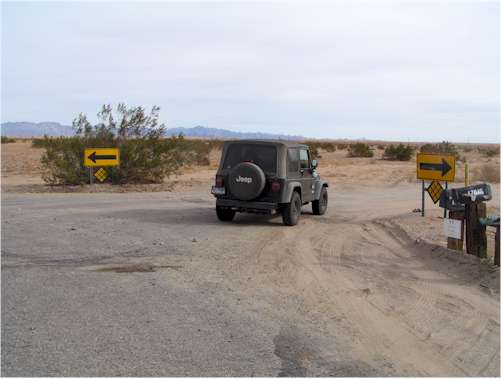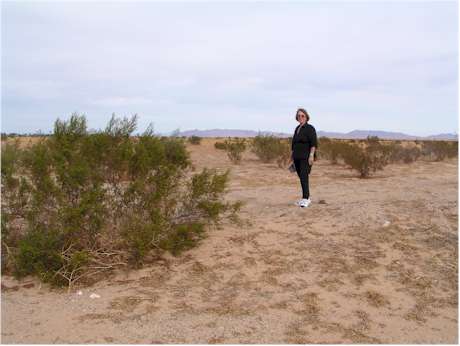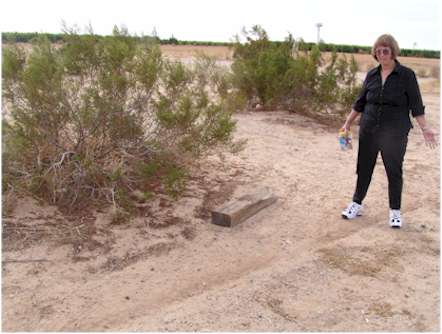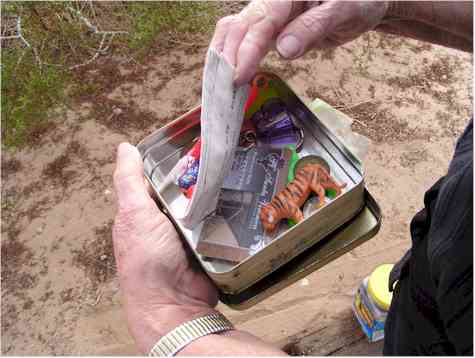
Geocaching
Dec 2010
Geocaching is sort of a high-tech treasure hunt. You are given the GPS coordinates of the cache, some description and perhaps a clue to help you find it. This information is available on a web site. Also available is a map to show you roughly where the cache is located. Then you are on your own.

Here we get on the road to find the cache. We were staying in the campground you can see to the left.
| All too soon we ran out of pavement. |
 |

The road deteriorated rapidly but we persevered; being the intrepid explorers we are and besides the GPS said we only had 50 feet farther to go.
| Even after the GPS tells you that you are there, you may be a far as 40 feet away from the cache, depending on the accuracy of your GPS (and the accuracy of the GPS of the person hiding the cache). Now you need to depend on your eyes and any information you found on the Geocaching internet site. |
 |

The cache wasn't in sight anywhere. However, there was a clue. It said "Train your thoughts on this clue.). Behold! There is a broken railroad tie.
| We quickly look under the railroad tie. But there was nothing there. |
 |

Fortunately, I was on the other side of the tie and could see what Marilee could not. The cache was in a cavity cut into the bottom of the railroad tie. This is either very clever or very sadistic depending on whether or not you found the cache.
| The cache was contained in this small tin box. It was held in the tie cavity with bungee cords. |
 |

The cache contained, as most do, a logbook and a number of small trinkets. The rule is that you may take any trinket you like if you replace it with another. You then sign the logbook and replace the cache as you found it. Clean up the site so that it is in the same condition as you found it.
Geocaching is a lot of fun and easy to do. It is available wherever you are. If you are interested, go to the Geocaching site at